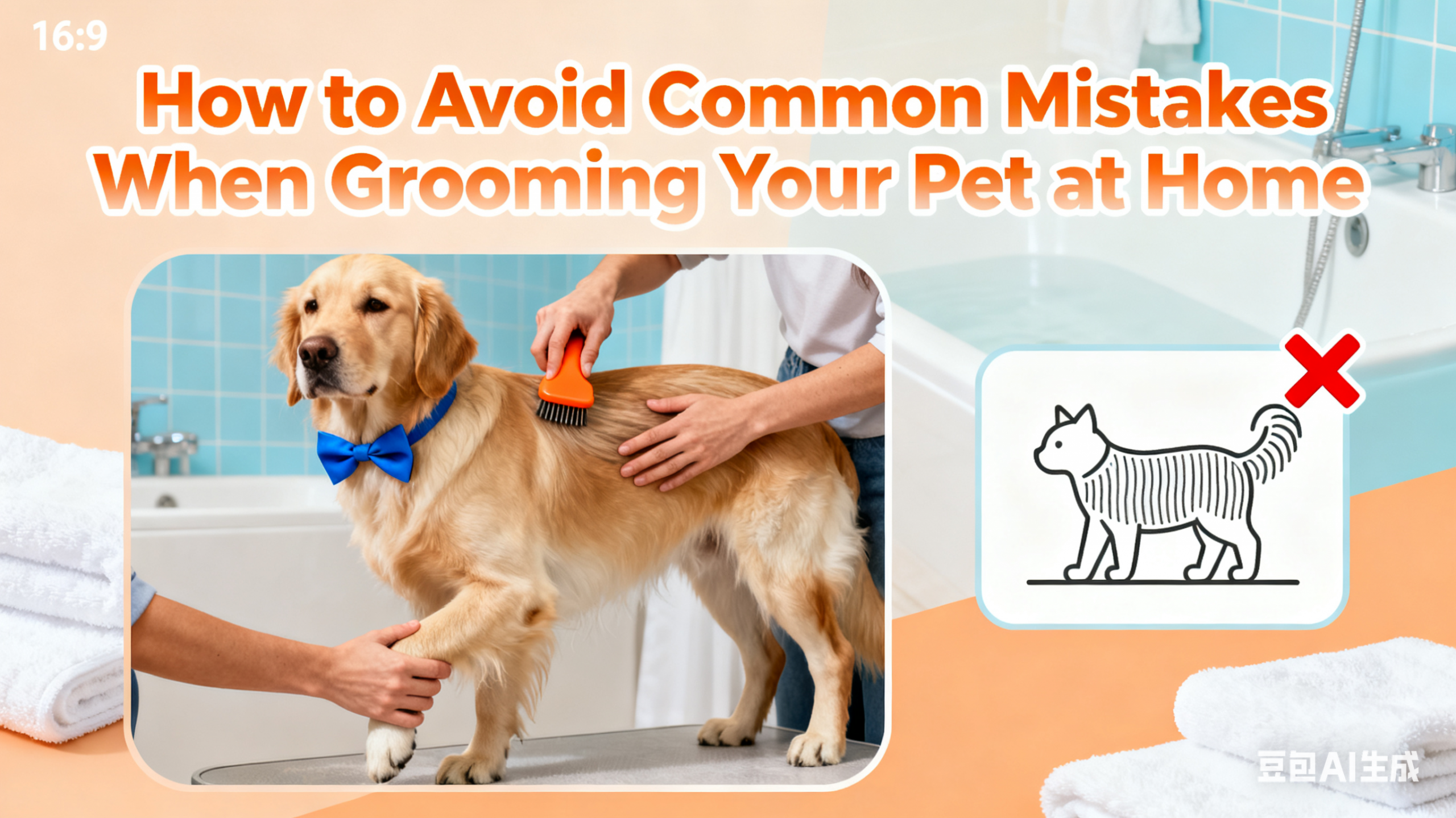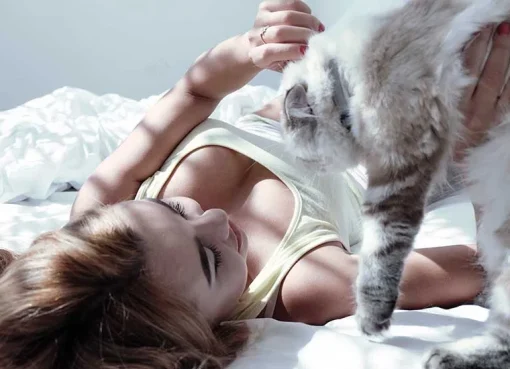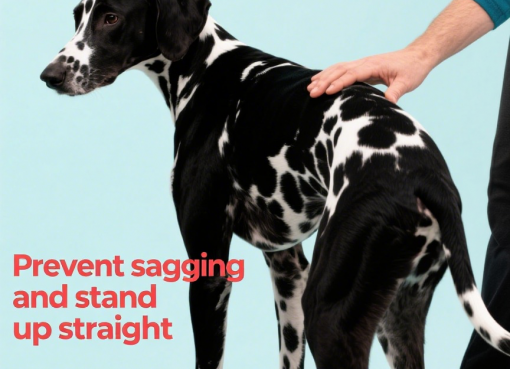How to Avoid Common Mistakes When Grooming Your Pet at Home: 2025 Guide

Table of Contents
-
Introduction: Why Home Pet Grooming Matters (And Mistakes to Avoid)
-
Mistake 4: Botching Nail Trimming (Too Short or Avoiding It)
Introduction: Why Home Pet Grooming Matters (And Mistakes to Avoid)
Home pet grooming is more than just a way to keep your furry friend looking tidy—it’s a chance to bond, check for health issues (like lumps or skin rashes), and save money on professional groomers. But avoiding common mistakes when grooming your pet at home is key: the wrong tools, techniques, or products can stress your pet, cause injury (like bleeding nails), or even lead to skin infections.
In 2025, more pet owners are grooming at home than ever—but vet data shows 60% make preventable errors. This guide breaks down the 7 most common mistakes, how to fix them, and how to turn grooming into a calm, positive experience for both you and your pet.
Mistake 1: Using the Wrong Grooming Tools & Products
One of the biggest errors when avoiding common mistakes when grooming your pet at home is picking tools or products that don’t match your pet’s needs. Using the wrong items can hurt their skin, damage their coat, or cause stress.
What to Avoid
-
Human shampoo: It disrupts your pet’s skin pH (which is more alkaline than humans’), leading to dryness, itching, or infections.
-
Cheap nail clippers: Dull clippers crush nails (painful!) instead of cutting cleanly. Avoid “human nail scissors”—they’re too small for most pets.
-
Cotton swabs for ears: They push debris deeper into the ear canal, risking ear infections or damage to the eardrum.
-
One-size-fits-all brushes: A bristle brush won’t detangle a Husky’s undercoat, and a slicker brush will scratch a Chihuahua’s short fur.
The Right Choices
-
Tools: Use a slicker brush for long-haired pets (e.g., Persians, Shih Tzus), an undercoat rake for double coats (e.g., Huskies), and a bristle brush for short-haired breeds (e.g., Labs). For nails, choose scissor-style clippers for small pets or guillotine clippers for large dogs.
-
Products: Opt for pet-specific shampoo (e.g., oatmeal for sensitive skin, flea-repellent for outdoor pets) and vet-recommended ear cleaner (like Zymox Ear Cleaner—a DoFollow link).
-
Safety gear: Keep styptic powder on hand (stops nail bleeding) and rubber gloves (protects your hands from scratches if your pet gets anxious).
Mistake 2: Ignoring Breed & Coat Type Needs
Every pet is different—and their breed and coat type dictate how you should groom them. Ignoring this is a top mistake when avoiding common mistakes when grooming your pet at home; it leads to mats, skin issues, or missed care.
Key Breed/Coat Tips
-
Long-haired breeds (e.g., Maine Coons, Poodles): Need daily brushing to prevent mats (mats pull on skin and cause pain). Use a detangling spray (pet-safe!) to loosen knots before brushing.
-
Double-coated breeds (e.g., German Shepherds, Malamutes): Shed heavily twice a year—use an undercoat rake during “blowing coat” season to remove loose fur (reduces shedding by 70%).
-
Hairless breeds (e.g., Sphynx cats, Chinese Crested dogs): Have sensitive skin—use a gentle, fragrance-free moisturizer after bathing (avoids dryness) and protect them from sunburn with pet-safe sunscreen.
-
Wire-haired breeds (e.g., Scottish Terriers, Wirehaired Dachshunds): Need “stripping” (removing dead hair by hand or with a stripping tool) every 3-4 months—never use clippers (it ruins their coat texture).
If you’re unsure, consult a professional groomer or your vet—they’ll tailor advice to your pet’s breed.
Mistake 3: Improper Brushing (Before & After Baths)
Brushing is essential—but doing it wrong (or at the wrong time) is a common mistake. Many owners skip brushing before baths, which turns loose fur into tight mats when wet.
How to Brush Correctly
-
Brush before bathing: This removes loose fur, tangles, and dirt—so the bath cleans deeper, and fur doesn’t mat when wet. For long-haired pets, spend 5-10 minutes brushing; short-haired pets need 2-3 minutes.
-
Use the right technique: Brush in the direction of fur growth (not against it!) to avoid pulling. Start at the head and work your way back to the tail—pay extra attention to “high-friction areas” (underarms, behind ears, around the tail) where mats form easily.
-
Brush after drying: Even short-haired pets need a quick brush after drying to fluff their coat and remove any remaining loose fur. For long-haired pets, use a slicker brush to smooth out any small tangles that formed during drying.
Pro Tip: Reward your pet with treats during brushing—this makes them associate it with positive feelings!
Mistake 4: Botching Nail Trimming (Too Short or Avoiding It)
Nail trimming scares many owners—but avoiding it (or cutting too short) is dangerous. Overgrown nails curl into paw pads (causes pain and limping), while cutting the “quick” (the pink part with blood vessels) leads to bleeding and fear.
Safe Nail Trimming Steps
-
Get your pet used to it: Touch their paws gently for a few days before trimming—give treats to build trust.
-
Find the quick: For light-colored nails, the quick is the pink area; for dark nails, look for a “pale circle” near the tip (stop 1-2mm before that).
-
Cut slowly: Trim a tiny bit of nail at a time (1-2mm per cut)—don’t rush! If you nick the quick, apply styptic powder (press gently for 30 seconds to stop bleeding).
-
How often: Trim nails every 2-4 weeks (more often for indoor pets—they don’t wear nails down outside).
If you’re nervous, watch tutorials from trusted sources like the American Kennel Club (AKC) (a DoFollow link) or ask your vet to demonstrate.
Mistake 5: Neglecting Ears & Dental Care
Ears and teeth are often forgotten during home grooming—but neglecting them leads to serious issues (ear infections, tooth decay). This is a critical mistake to avoid when avoiding common mistakes when grooming your pet at home.
Ear Cleaning Done Right
-
How often: Weekly for floppy-eared breeds (e.g., Cocker Spaniels, Basset Hounds)—they trap moisture and dirt. Monthly for upright-eared pets (e.g., German Shepherds).
-
Steps: Dampen a cotton ball with vet-recommended ear cleaner (never pour cleaner directly into the ear!). Wipe the outer ear canal (don’t go deep!) to remove dirt. If ears smell bad, look red, or your pet scratches them, see a vet—this could be an infection.
Dental Care Basics
-
Daily brushing: Use a pet-specific toothbrush (small head for cats/toys, larger for big dogs) and toothpaste (flavors like chicken or beef—never mint, which pets hate). Brush in small circles, focusing on the back teeth (where plaque builds up).
-
Avoid human toothpaste: It contains fluoride, which is toxic to pets if swallowed.
-
Supplements: If your pet hates brushing, use vet-approved dental chews (like Greenies Dental Treats—a DoFollow link) to reduce plaque.
Mistake 6: Bad Bathing & Drying Habits
Bathing your pet seems simple—but mistakes here cause skin irritation, mats, or stress. The most common errors: using hot water, not rinsing shampoo fully, or skipping drying.
Safe Bathing Steps
-
Water temperature: Use lukewarm water (like a baby’s bath)—test it with your wrist to avoid burning or chilling your pet.
-
Shampoo application: Dilute pet shampoo with water (1:1 ratio) before lathering—it spreads evenly and is easier to rinse. Avoid the face (use a damp cloth to clean around eyes/nose).
-
Rinse thoroughly: Leftover shampoo dries out skin and causes itching—rinse until water runs clear (this takes 2-3 minutes for long-haired pets).
-
Dry completely: Use a absorbent towel to pat (don’t rub!) fur dry. For long-haired or double-coated pets, use a pet hair dryer on low heat (hold it 6 inches away to avoid burning skin)—mats form if fur stays damp.
How often to bathe: Every 4-6 weeks (more often only if your pet gets dirty—over-bathing strips natural oils from their coat).
Mistake 7: Mishandling Sensitive Areas (Eyes, Genitals)
Sensitive areas like the eyes, nose, and genitals need extra care—but many owners rush or use the wrong tools, causing injury or stress.
How to Groom Sensitive Areas Safely
-
Eyes: Use a damp, soft cloth to wipe away crust or tear stains (avoid rubbing!). For tear stains on white breeds (e.g., Maltese), use a vet-recommended stain remover (never hydrogen peroxide—it irritates eyes).
-
Genitals/Anus: Use a mild pet wipe (unscented!) to clean around these areas during baths—never use soap (it disrupts delicate skin). If you notice redness or discharge, see a vet.
-
Paws: Trim excess fur between paw pads (long fur traps dirt and ice in winter) with small, rounded-tip scissors (avoids cutting skin). Check paws for thorns or cuts after outdoor walks.
Stay calm and move slowly—if your pet tenses up, take a break and give a treat. Rushing leads to mistakes!
Pro Tips: Make Home Grooming a Bonding Experience
Avoiding mistakes is key—but making grooming fun for your pet turns it into a bonding moment. Here’s how:
-
Keep sessions short: 10-15 minutes max (longer sessions stress pets out).
-
Positive reinforcement: Give treats, praise, or playtime after grooming—your pet will learn to look forward to it.
-
Choose the right time: Groom when your pet is relaxed (e.g., after a walk, not when they’re hyper or hungry).
-
Use distractions: For anxious pets, play calm music or give them a chew toy during brushing/nail trimming.
If your pet still hates grooming, don’t force it—ask a professional groomer for help. It’s better to get help than to stress your pet out.
Conclusion: Groom Safely, Bond Deeply
Learning how to avoid common mistakes when grooming your pet at home isn’t just about keeping your pet healthy—it’s about building trust. Every gentle brushstroke, safe nail trim, and calm bath tells your pet you care, strengthening the bond you share.
Remember: grooming isn’t a “task”—it’s a chance to check in on your pet’s well-being (spotting lumps, skin issues, or ear infections early) and spend quality time together. With the right tools, techniques, and patience, you’ll turn home grooming into a positive experience for both of you.
For more help with pet care, check out our guide: How to Choose a Vet for Your Pet — a good vet can help you address grooming challenges specific to your pet’s health.




Leave a Comment